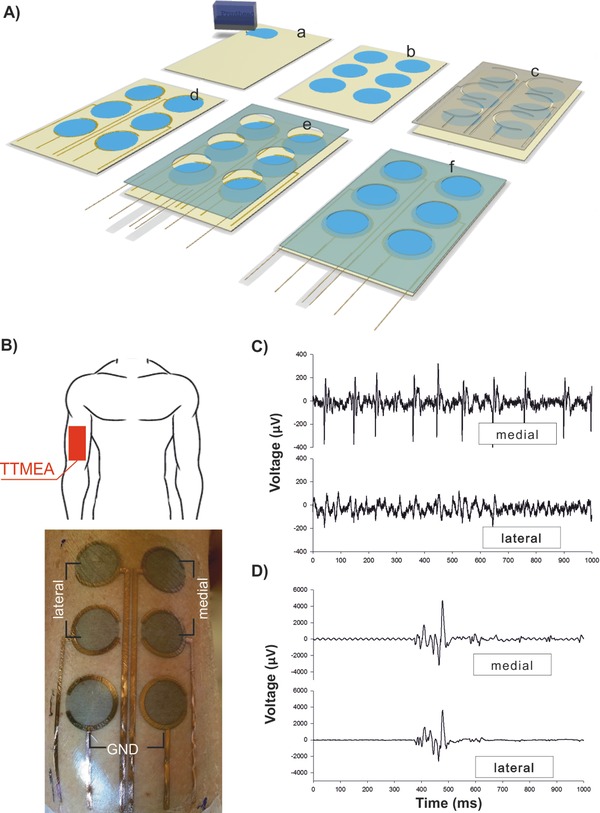Figure 4.

Temporary tattoo multielectrodes arrays (TTMEAs) for sEMG recording. A) Schematic view of the TTMEAs fabrication flow divided in six steps. (a and b) Inkjet printing on the tattoo paper of the PEDOT:PSS sensing area (circle, d: 16 mm). (c and d) Mask and Au sputtering deposition for internal interconnections. (e and f) Assembling of the whole tattoo with shaped glue layer and wires for external contact. B) Schematic of location of TTMEA (top) and picture of TTMEA transferred on the right biceps of a voluntary subject (bottom). The array design has been chosen in order to detect signals from two different channels: medial and lateral; the bottom pair of electrodes is the ground references (highlighted in picture). C) EMG recordings during a very low isometric contraction, aimed at recruiting few motor units; the apparent repetitive firing in the upper trace, but not in the lower one, is produced by one single motor unit, indicating the high selectivity of the recording. D) A single burst of voluntary phasic contraction is almost equally recorded by both channels. In (C and D), the signal was filtered in a 10 Hz–3 kHz frequency window and notch line filter was off.
